Cosmas is the blockchain internet, which was created with the aim of creating a network to fill the gaps of the mutual chain and exchange data without central supervision and to simplify transactions. Cosmos Hun also acts as a central network to connect different chains to a dedicated point to interact with each other. The native Atom token is used to maintain the ecosystem of this network by rewarding, validating and staking. In 2014, computer scientist Jae Kwon developed Tendermint, an open-source software for running a blockchain distributed ledger. . After that, the network was launched with the support of Interchain Foundation (ICF) with Tendermint algorithm core. A few years later, in 2017, ICF held an ICO of tokens for this currency and successfully raised over $17 million. These funds raised through Series A funds further support the development of the network. Subsequently, Jae Kwon, along with co-founder Ethan Buchman, wrote the network's white paper in 2019. After this article was published, Cosmas was officially launched on the main network in March 2019.
Cosmos Hub uses a proof-of-stake (PoS) mechanism to maintain interoperability between all network regions. This communication between different blockchains, known as the Inter-Blockchain Communication (IBC) protocol, helps to increase the unlimited interoperability of blockchains that are based on Temdermint. For example, all proof-of-stake digital currencies such as Cardono (ADA) have the possibility to connect to IBC.
Another goal of Cosmas is to create and launch governance issues in other networks such as Ethereum. Creating and running them in decentralized applications (DApps) makes it easy for users.
Network layers
The Cosmas network consists of three important layers, which we will discuss in the rest of the article.
Application layer: This layer is located on top of the blockchain software, which defines the functionality of the state and transition state.
Hubs and network: In this layer, inter-chain communication happens, which is the interaction to facilitate transactions in each blockchain.
Consensus: This layer is to facilitate consensus in the network.
When these three layers are combined together, developers can easily build an application. This tool is only available through outsourcing such as the Tendermint Byzantine Fault Tolerance (BFT) engine.
This tool is exactly what makes the 3030 algorithm a network backbone. BFT is also a proof-of-stake governance mechanism that coordinates the distributed network with the Cosmas Hub.
Network function
All blockchains in the network that work through the IBC protocol are connected to each other using the Tendermint BFT algorithm. Other blockchains separate from the Tendermint core communicate with each other through the Blockchain Interface (ABCI). Also, it allows developers to use different DApp programming languages on their respective networks. For this reason, users do not need to develop a DApp. Instead, they can use existing code to replicate the DApp.
Basically, ABCI is a bridge between the Tendermint kernel and the SDK. The Cosmos SDK allows developers to build projects on the network. All these systems work together and are connected to the main core of the network, which is Cosmas Hub.
How does Cosmas communicate with PoW networks from the PoS network?
To achieve this goal, Cosmas uses Peg Zones. What are Zones in Blockchain? PegZone is a bridge-like system that provides a solution for PoW networks that lack fast certainty. Ethereum has smart contracts. For this reason, it is easy to create the final threshold, link the contracts in the consolidation zone and link them to the Tendermint core using ABCI. But Bitcoin does not have smart contracts. For this reason, the connection between Bitcoin and Cosmas is much more complicated than the connection between Ethereum.
The Cosmos SDK can provide simple tools for developers without the governance issues found in Ethereum. For example, if developers want to create a DApp on Ethereum, they must comply with certain rules and regulations set by the Ethereum network. But there is no such law regarding the network.
Cosmos Technical Analysis
Cosmos digital currency was accepted by the CoinMarketCap website in May 2019 at a price of $7, but immediately after its launch, it experienced a 45% fall, and then its price began to fluctuate, but it was never able to return to its recorded peak. Although Cosmos could not create a big price growth for some time, advanced technology and freedom in research and testing on blockchains caused its market size to increase significantly.
With the overall market value of Cosmos increasing, this Crypto Signal experienced a big jump in the ranking table of the website CoinMarketCap and even managed to take the place of advanced and popular coins such as Zcash and IOTA. In terms of forecasting and technical analysis of Cosmos, it should be said that this coin is not very attractive to investors compared to other digital currencies; Because not much time has passed since its launch and it has not yet become stable enough for large investments.
The only reason Cosmos could break the $10 level in 2020 is nothing more than the total number of coins in circulation on the network; Because more than 80% of the ATOM token is traded among users, and if the increase in the number of users continues, it could start a new upward wave in 4 or 5 months and cause a 50% price growth.
The upward trend continued in 2017 with an initial coin offering (ICO) where $20 million worth of ATOM tokens were sold at $0.1. Of course, it took 2 years for Cosmas to enter the CoinMarketCap website. If we want to talk about the price prediction of Cosmos digital currency for the next 5 to 10 years, we must say that Cosmos can reach the price of 50 dollars by 2030 and spend half of this period, that is, until 2025, in the price fluctuation between 20 and 25 The dollar will pass.
The reason for these fluctuations is that in order to increase the price of the ATOM token, it is necessary to have more cooperation and launch more projects in this network in the coming years. This will increase the number of active developers on the network, increase users, and thus increase the overall market value of Cosmos.
Cosmos SDK is one of the most popular blockchain creation platforms in the world, which has created many popular and practical projects such as binance futures signals DEX. This exchange uses Tendermint consensus, P2P network logic and various Cosmos SDK features. In addition to Binance exchange, Khaleq Cosmos has other partners such as Data Chain, Theta Token, Loom Network, IRIS, Foam, etc.
Currently, the ATOM token is available in various exchanges such as Binance, Bitforex, Hotbit, LATOKEN, MXC, etc., and the transactions processed daily in this network reach more than 200 million dollars.
Cosmos fundamental analysis
Along with the technical analysis of Cosmos, it is also necessary to pay attention to the fundamental view and analysis. In general, the whole goal of Cosmos developers is to turn it into a blockchain internet, and now with the help of Zones, they can connect to the world's top Crypto VIP Signal, including Bitcoin and Ethereum. Currently, the launch of new coins that have used the Cosmos platform to create their blockchain and resources will increase the value of the ATOM token in the future and become one of the most successful projects in the crypto industry. Of course, there are other blockchain companies in the market that offer such a platform with different technology, but scalability, ease of use and sovereignty are among the reasons that make Cosmos different and distinct from similar projects such as Cardano, Komodo, Wanchain, Ark and Aion have done.
In the competition between Indicator Crypto industry decentralized application development platforms, Cosmos is the market leader. It is a highly scalable, advanced, secure, powerful, connected and customizable blockchain project that helps connect different blockchain projects. The project started with its interoperable platform and now offers a complete and advanced solution where developers can create and launch their own applications. Cosmos SDK is the world's first modular framework serving developers.
What does Zones mean?
Custom blockchains are called Zones. Zones are used for a wide variety of different applications. This term is actually an alternative name for blockchain side chains. Each Zone can authenticate its own transactions. Also, developers can each have a personal Zone with the ability to interact.
Zones use the Hub & Spoke architecture, where hubs act as routers for different zones. The Cosmos Hub is one of the most popular of these, but there are others. In fact, every developer has the ability to create his own hub on the network. By connecting to a hub, a blockchain can connect to any Zone connected to the same hub. Hubs can also be connected to each other. Also, anyone can fork Cosmos Hub and launch their own version, similar to what Binance Spot Trading Signals did on the Binance Chain in 2019.
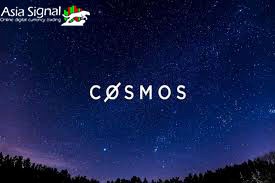
What is Cosmos Hub?
Cosmos Hub is the main Cosmos blockchain that connects other customized blockchains called Zones. This is done by tracking the status of each Zone through the Inter-Blockchain Communication (IBC) protocol. Through this protocol, information can be easily moved between any regions connected to the Cosmos Hub.
Cosmos Hub acts as a central ledger for the ecosystem where Zones exchange communication messages between blockchains. These messages use two transaction types known as IBCBlockCommitTx and IBCPacketTx.
IBCBlockCommitTx communicates the latest hash of the block in any given Zone, and IBCPacketTx allows a Zone to prove that the chain of information sent is legitimate and was published by the sending application.
Let's imagine that two decentralized applications in two different regions want to communicate with each other. To do this, IBC messages are sent to the Cosmos Hub. After that, messages are sent to different Zones through Cosmos Hub, and each Zone records the results of its interactions on its own blockchains.
Finally, the result of the interaction of the two example decentralized programs as well as Cosmos Hub can be seen in the blockchain, and in fact, this interaction has been successful. This ability of blockchains to interact with each other has given this currency the nickname of the Internet of Blockchains.
What is Cosmos SDK?
The Cosmos SDK is an open-source software development kit that allows users to create custom blockchains. The default consensus protocol in the Cosmos SDK is Tendermint Core, but there are various pre-built modules that developers can use without Tendermint. Of course, using the Cosmos SDK simplifies this process significantly and provides all the standards expected when building a blockchain.
One of the best examples created in Cosmos SDK is Binance China.
What is Tendermint and why is it important?
Tendermint is a protocol that provides a blockchain consensus mechanism. In addition, Tendermint provides a tool that allows various network applications to connect to the blockchain. Tendermint Core is the default consensus protocol.
Tendermint Core performs the necessary validation for network nodes by keeping a copy of the blockchain data. Of course, there is a validation limit in Cosmos Hub. So that only 100 nodes are able to receive credit from the network at the same time, and in order to add a new block to the blockchain, voting must be done in the government system.
For voting and validation in Cosmas, the native token of this network, Atom, must be used. The Tendermint mechanism is designed to reward lenders on the network. In this way, the system will automatically reward them for voting and assigning credit to every 100 nodes created. This will increase the validity of the native token of Cosmas, as well as higher security of transactions.
Tendermint is currently very popular among system contributors for many reasons. For example, Tendermint is very suitable for private and public blockchains. Tendermint also has the ability to process thousands of transactions per second and confirm these transactions in less than a second. Transactions are confirmed as soon as they are created on the network, which happens much faster compared to the Ethereum and Bitcoin blockchains.
Definition
Now we want to answer the question of what is atom currency. Atom's native token is used to run services on the network. The tokens of this currency cannot be mined like PoW networks. The computing power of the nodes does not determine their mining reward. Instead, nodes are rewarded based on the number of tokens they take. The more you stick with these interpretations, the more rewards you get.
In this situation you need to lock your Atom currency tokens for a certain period of time until the network can use your tokens to secure itself. After the staking period is over, you can withdraw your tokens. In addition, they give you additional tokens as an incentive to continue staking ATOM cryptocurrency. If a node is not detected correctly, that node is penalized and tokens are lost.
Another important feature is its use to enhance the participation of validation nodes. For example, to participate in Network Validation, a participant must be at least in the top 100 to be eligible to share. If a contestant is in the top 100, they get the right to vote on grid changes. At the same time, voting power is highly dependent on the amount of currency. Because of this, voting power is always at risk.
ATOM has a very specific total supply – 260,906,513 tokens to be exact. Of these, at the time of writing this article (May 15, 2022), about 203,121,910 tokens are in circulation. It is worth noting that these Crypto Signal Leaks are not mined – instead, they are acquired through shares.
Two private sales were held in January 2017, followed by a public sale in April of the same year. The project raised a total of $16 million, which is roughly $0.10 per ATOM.
Breaking down the token distribution, about 80% was allocated to investors, while the remaining 20% was split between two companies: All in Bits and Interchain Foundation.
Attributes
Staking: The Staking Hub module built on the Tendermint engine is one of the most efficient implementations of the Proof of Stake algorithm in the world. Token holders can secure the blockchain chain by locking their token in exchange for a transaction fee.
Voting: By staking tokens, holders can participate in the voting processes of the network.
The main competitors
Currently, the main focus of blockchain developers is on the Ethereum network. For example, by presenting the concept of multichain, Polkadat is trying to change the Ethereum network and connect different points of this network to each other. If this happens, the traffic load of the Ethereum network will be much lower than in the past.
Atom Khosh Ayetha and its best wallets
At the beginning of its arrival, the network introduced itself as a revolutionary digital currency network. After publishing this name, he put the name Kazmas on his network. Because of this, tokens were widely accepted by many major cryptocurrency exchanges. Atom currency is currently available on major digital currency exchanges.
Always store your assets in an encrypted wallet to keep them safe. If your assets remain in crypto exchanges, they can be hacked at any moment. There are many options for storing your assets in the best Atom wallet, including hardware wallets and software wallets. Also, you can use a paper wallet.
The best hardware wallets for the network include:
- Ledger Neno X
- Ledger Neno S
The best mobile software wallets for the network include:
- Cosmostation
- Wetez
- The best web wallets for the network include:
- Lunie
- Cosmostation
A look back
Over the past few years, the network has expanded its ecosystem with new partners and new projects. This caused its price to rise. For example, Binance China works on the network. Akash is working on providing a marketplace for developers there. E-Money is a European network that works on the network. IRISnet is built with the Cosmos SDK and has plans to focus on the business domain, giving it blockchain interoperability. Also, Loom was a project that started on Ethereum. But due to the many features of the Tendermint BFT algorithm, it has now been transferred to the network.
All these projects that we mentioned and many others make Cosmas a relatively desirable network for developers and investors. To add anonymous credentials to the network, the team partnered with Nym in 2020. But a few months later, the network launched the IBC protocol along with Stargate and released it to the public.
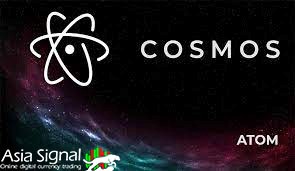
Price analysis
Atom currency was launched in March 2019 with a base price of $7.50. Its price dropped to $3.45 within a few days. Because, those who bought their Atom currency in the ICO took advantage of the new price and sold their tokens. Similarly, in June of the same year, the price of Atom currency reached 7 dollars. But in September, it dropped again to $2. Finally, Atom ended 2019 at $4.20.
In the first three months of 2020, the price of Atom currency decreased again to $1.60. In this situation, many investors started buying Atom currency and its price quickly reached 8.50 dollars by August. It reached 5 dollars again by December of the same year.
Since the beginning of 2021, Atom currency has grown significantly and has grown almost 7 times. This year, it reached its all-time high of $32.14 on May 7, 2021. The upward trend of Bitcoin also helped the price of Atom currency to reach its highest level in May 2021. This was a 448% increase in the price of Atom currency within four months, and then it went down. Atom currency was traded at the price of $11.57 until July 15, 2021.
Atom currency price prediction
The network has a series of scalability problems that it seeks to solve. However, there is no concrete evidence that predicts the future of the atom with certainty. In the following, we will discuss some predictions according to the current situation.
According to the forecast, the average price of ATOM in 2022 can be $27.7, which will reach $31.1 in 2023, $42 in 2025, and $98 in 2030. According to the price forecast, the average ATOM price can reach $41.7 in 2022. $212 in 2025 and $774 in 2030.
Coins in the future
In this article, we reviewed the guide to buying Atom currency. The network is introduced as the "internet of blockchains". It is also now working on integrating DeFi into its network by creating Gravity DEX, an automated market maker (AMM) that can increase network liquidity. One of the key features of this AMM is the possibility of having a hybrid version of liquidity pools and traditional order book models. The developers believe that this may be the main reason why Gravity DEX has become one of the most efficient Automated Market Makers (AMM) in the cryptocurrency market.
The innovation of AMM and the connection of different blockchains are among the reasons that make the network one of the best networks in the digital currency market. Also, the addition of the IBC feature has had a positive impact on the network in the past and will continue to do so in the coming years.
Another future plan for the network is the addition of Gravity Bridge. This feature adds a connected Peg Zone directly to the Cosmos Hub so that tokens from different blockchains can be used directly to secure the network. Due to all these mentioned features and limited supply, the price is reduced. But future updates to the network will increase the possibility of increasing demand and thus increasing the price of Atom currency. All these cases have been the general answer to the question of what is atom digital currency.
Frequently asked questions
1. What is the Cosmas network?
Cosmas is a blockchain network and internet. Cosmas increases the scalability, collaboration and usability of these blockchains.
2. What is an atom?
ATOM is the main token of the Cosmas network. Atom is a token to pay the fees of the Cosmas network
3. What are the best wallets to store Atom?
Ledger, Cosmostation, Atomic Wallet, Kepler, Copper Wallet, Trust Wallet




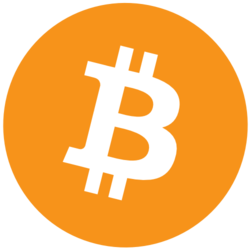
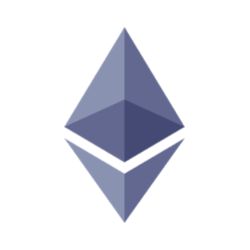
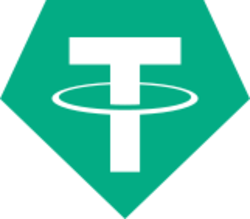
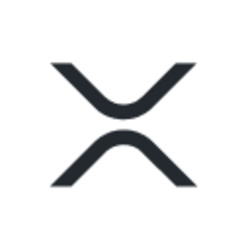





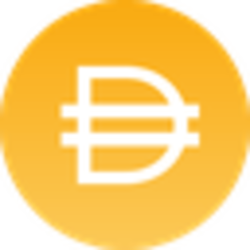
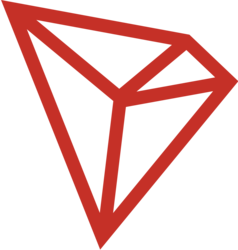
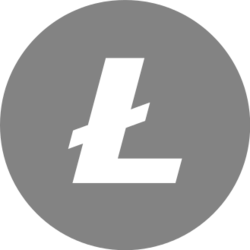

Comments